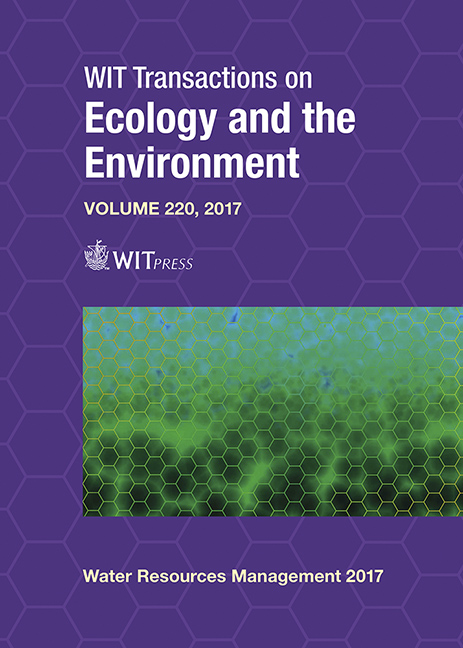THE REALISM OF STOCHASTIC WEATHER GENERATORS IN RISK DISCOVERY
Price
Free (open access)
Transaction
Volume
220
Pages
11
Page Range
239 - 249
Published
2017
Size
581 kb
Paper DOI
10.2495/WRM170231
Copyright
WIT Press
Author(s)
ABDULLAH ALODAH, OUSMANE SEIDOU
Abstract
Weather generators reproduce artificial climate time series that are commonly used for hydrological modeling and climate adaptation studies. To examine the representativeness of a stochastically generated climate time series, a novel stochastic method is suggested where these time series are projected in two spaces (the Climate Statistics Space – CSS; and the Risk and Performance Indicators Space – RPIS). A visual inspection as well as the Mahalanobis distance are used to assess the two spaces relative position and their proximity to the points representing the observations. The dimensions of the CSS are a subset of climate statistics, while the dimensions of the RPIS are a set of risk and performance indicators calculated using streamflow time series. A rainfall-runoff model is used to convert all climate time series from the CSS into streamflow time series in the RPIS. Three stochastic weather generators were used in this study: The Weather Generator École de Technologie Supérieure (WeaGETS), the Multisite Stochastic Weather Generator (MulGETS) using two different generation algorithms, and a k-nearest neighbour weather generator. Each generator was used to construct precipitation, maximum and minimum temperatures time series representing the historical period. The suggested approach was tested on a 41-years-long climate and flow time series from South Nation watershed in Eastern Ontario, Canada. The MulGETS model was able to perform well where the point representing the observations was centered inside the cloud of points representing the synthetic time series in some CSS.
Keywords
stochastic hydrology, hydrological modeling, weather generators assessment, risk and performance indicators





